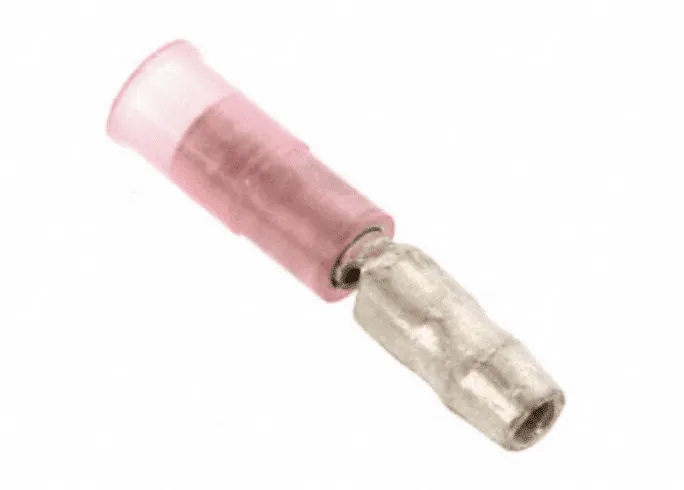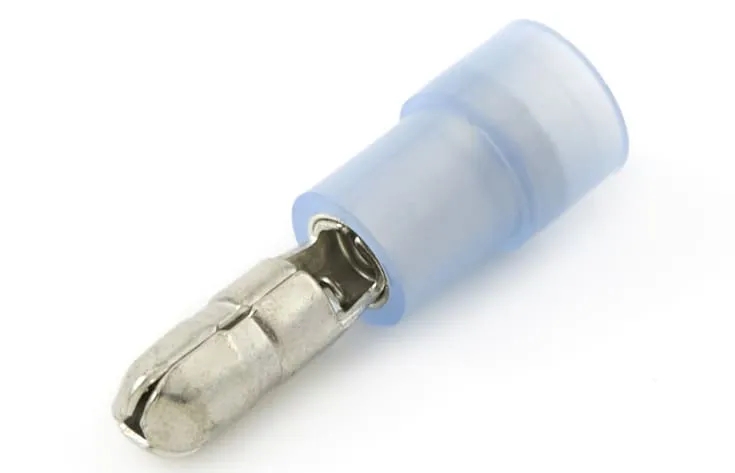Bullet head connector is a common wire connecting component, named after its compact cylindrical appearance. They are widely used in impermanent electrical connection scenarios, such as automobiles and transportation equipment, HVAC systems, entertainment systems, remote control models (RC), and lighting equipment. As an alternative to welding, this type of connector exhibits excellent applicability in situations that require frequent adjustment, maintenance, or temporary installation.

Structure and Working Principle
Bullet connectors are divided into two types: male and female, and are connected to each other through mutual insertion and matching to achieve circuit connectivity. During installation, insert the wire with stripped insulation into the metal sleeve at the end of the connector, and then use a crimping tool to secure the terminal, thereby forming a strong electrical connection. Its structure is simple, easy to operate, and does not require welding, greatly improving the flexibility and efficiency of on-site assembly.
Dimensions and specifications
These types of connectors come in various sizes, with common diameters ranging from 2 millimeters to 5 millimeters. When selecting, it is necessary to match the American Wire Gauge (AWG) size of the wire to ensure good electrical contact and mechanical strength. Different sizes are usually paired with insulation sleeves of different colors for easy identification and classification by users.
Materials and Properties
The conductive part of the bullet connector is usually made of brass or copper material, and the surface is treated with tin plating or gold plating to improve conductivity and oxidation resistance. External insulation sleeves are often made of nylon or polyethylene materials, which not only provide electrical insulation, but also help users quickly distinguish specifications through color coding.
Its performance parameters generally include:
Temperature resistance range: up to 105 ° C (221 ° F);
Rated voltage: suitable for AC or DC circuits, supporting up to 300 VDC;
Mechanical strength: The crimping structure has good resistance to vibration and tensile pull.、

Main application areas
With its compact, lightweight, and reliable characteristics, bullet connectors are widely used in the following scenarios:
Automobile and transportation: such as the connection between electronic speed controllers (ESC) and motors;
Industrial equipment: temporary wiring for control systems, sensors, and lighting circuits;
Consumer electronics: including audio systems, remote control vehicles, and various low-voltage lighting equipment;
HVAC system: commonly used for interface connections of fans, sensors, and control units.
summary
Bullet head connectors have become an ideal choice for impermanent electrical connections due to their simple structure, flexible use, and high reliability. Whether in the debugging phase with frequent changes or in temporary systems that require rapid deployment, it provides an efficient connection solution that is superior to welding. After correct selection and crimping installation, this connector can maintain stable electrical performance in various harsh environments.

